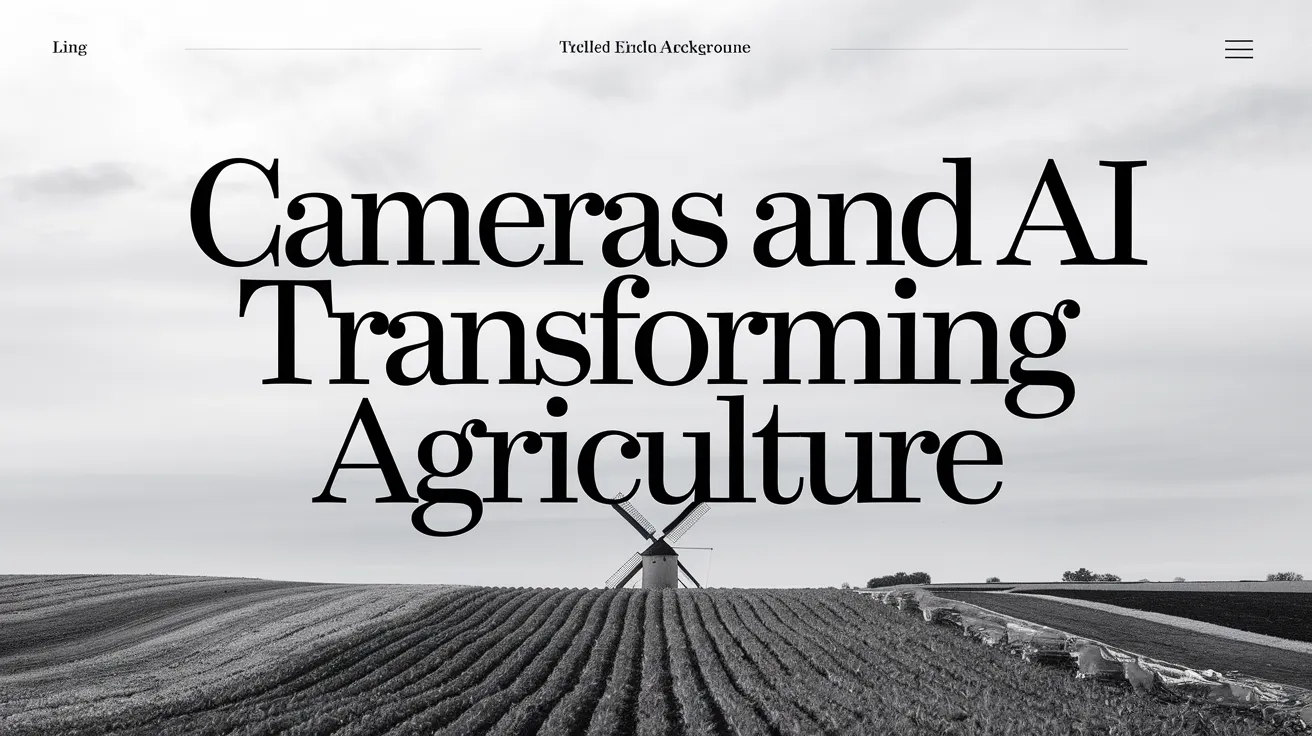Cameras and AI: Transforming Agriculture

The integration of camera-based technology and artificial intelligence (AI) is emerging as a powerful force in modern agriculture, significantly highlighted at Agritechnica 2025. As drones capture attention in digital agriculture, the evolution of camera scanning applications for crop evaluation and machine processes is gaining momentum, creating a synergy with drone technologies.
This digital imaging has spurred numerous advancements, as evidenced by the silver medals awarded to innovative technologies. The capacity to digitally represent crops, be it through a barley field or a more complex image like a brain scan, allows for mathematical processing that yields tools for identifying patterns and characteristics.
At the core of this technology are crucial image processing principles. Defined clearly, if a manipulated image is produced from an input image, that represents image processing; conversely, when a digital depiction leads to a visual representation, it’s termed computer graphics. If an image is input to derive a digital description, it’s classified as computer vision; while altering a description leads to an output, we refer to this as AI. The discourse on whether this equates to “true AI” will persist, yet it emphasizes the nuanced perspective that much of modern image analysis operates on machine-derived descriptors rather than direct visual inputs.
One foundational principle to bear in mind is the adage “garbage in, garbage out”; this underscores that the quality of the input, whether it be an image or its description, critically influences the accuracy of results. This concept holds particularly true for multispectral cameras capable of capturing data beyond visible light, such as infrared and ultraviolet wavelengths. They have significant advantages in detecting crop distress due to diseases or drought conditions much earlier than is visible to the naked eye, despite their higher cost, which can be three to four times that of standard cameras.
During this year’s event, several camera-based technologies showcased their capabilities, some receiving recognition through the DLG awards. Notably, the Yield EyeQ developed by Carl Geringhoff mbH & Co. employs rear-mounted cameras on combine headers to optimize operational settings in challenging harvest environments like lodged crops. This allows real-time adjustments based on leftover grains and seed heads detected post-harvest, potentially paving the way for integration with a harvester’s automated systems in the future.
Another remarkable innovation featured was the Smart-Hill system, collaboratively created by Einböck and Claas E-Systems. Utilizing a high-resolution Claas Culti Cam stereo camera, this system gauges side slope gradients during hoeing and autonomously adapts the hoeing implements to maintain alignment with the crop row, employing advanced color analysis and 3D modeling for precise adjustments.
Moreover, three competing companies presented similar camera-centric innovations aimed at optimizing maize silage processing. Each system, awarded silver medals, leverages AI to analyze the structure of harvested material, distinguishing between grain and plant residue in order to measure grain constituents accurately. They segment this analysis into fractions based on size to calculate the Corn Silage Processing Score (CSPS), enabling immediate adjustments to the harvesting equipment—a crucial feature for operational efficiency in silage production.
While it’s evident that these sophisticated systems come with significant costs, the discussion often overlooks their essential requirement for a consistent power source. As systems evolve in complexity, their operational demands will also increase, necessitating consideration of how energy consumption accumulates over time in a farming operation.